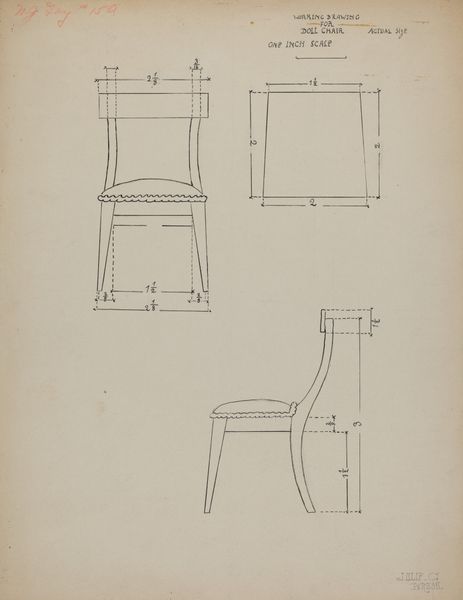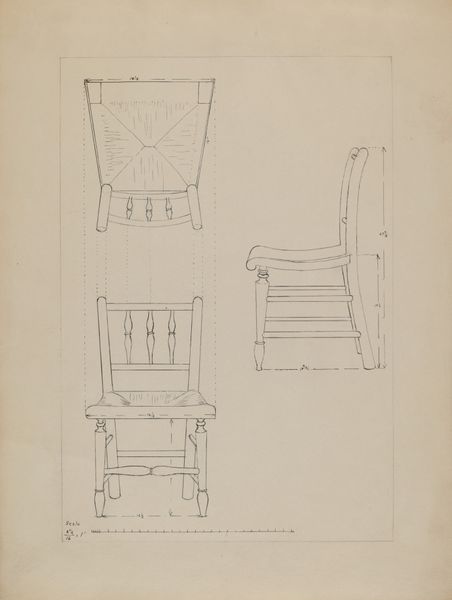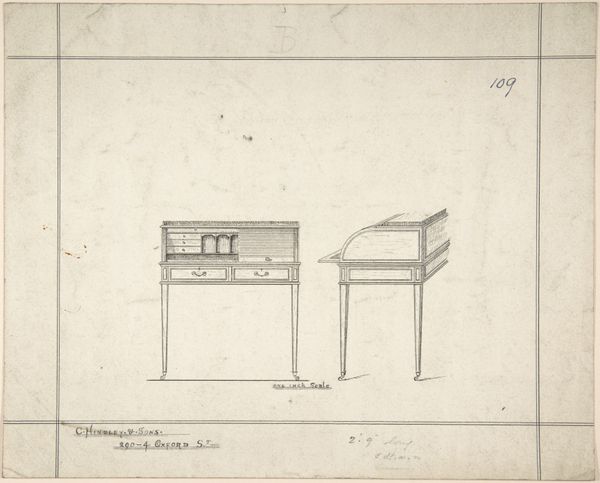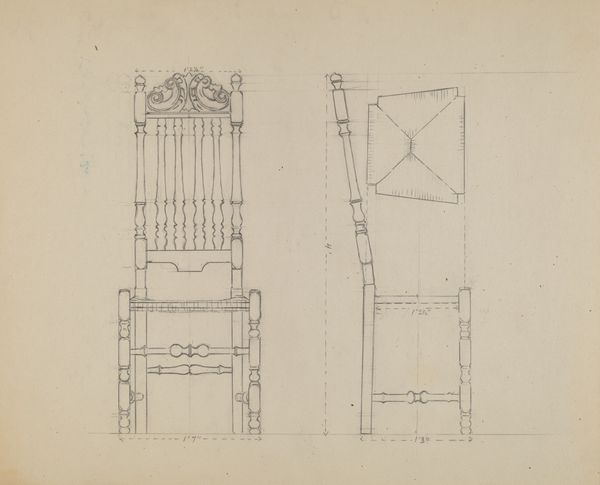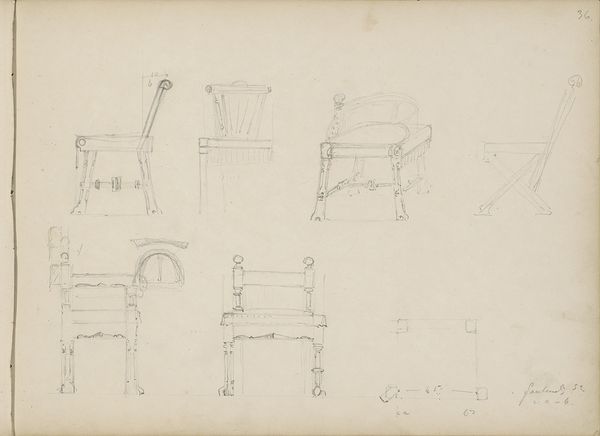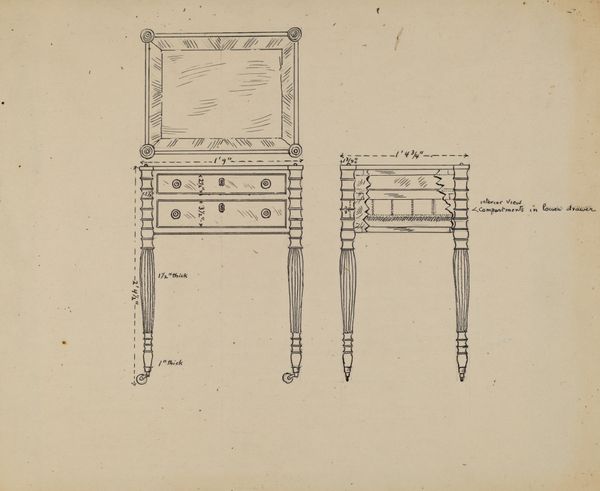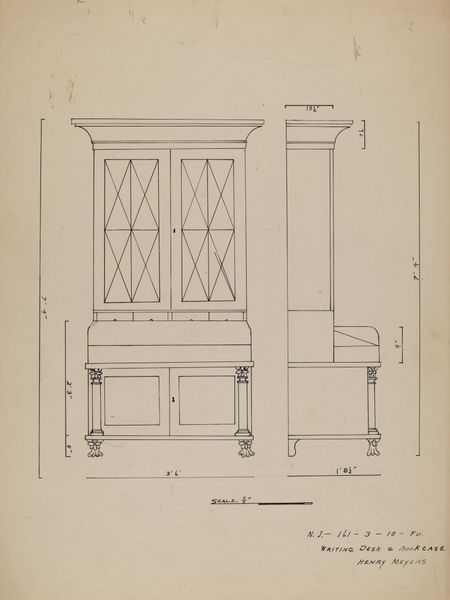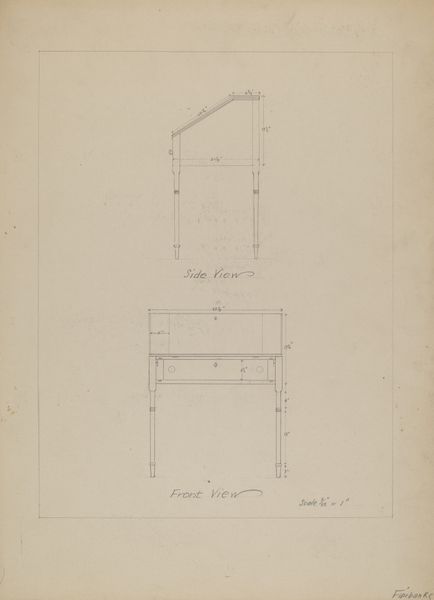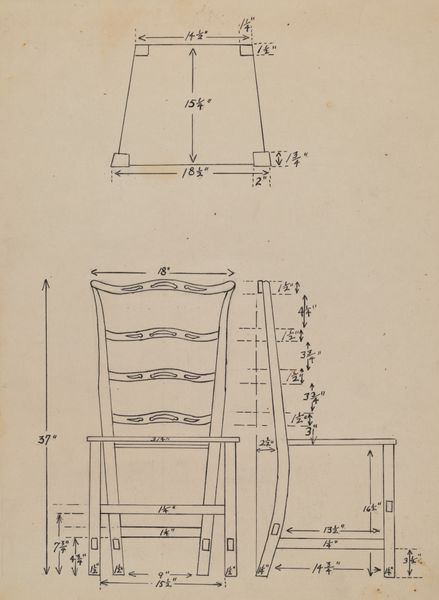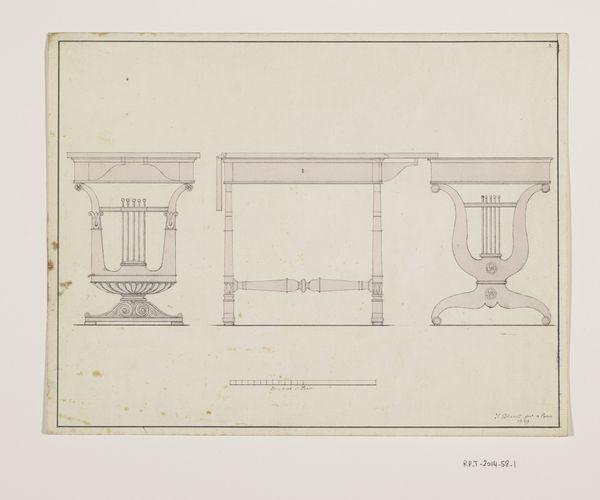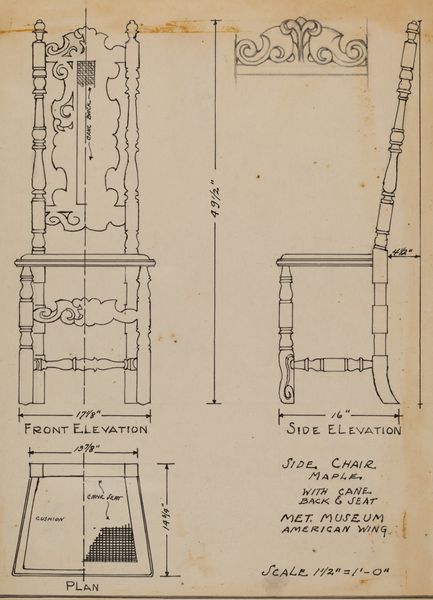
drawing
#
drawing
#
geometric
#
line
Dimensions: overall: 22.9 x 29.9 cm (9 x 11 3/4 in.)
Copyright: National Gallery of Art: CC0 1.0
Curator: Welcome. Today, we are exploring "Chair," a drawing executed by Isadore Goldberg sometime between 1935 and 1942. It's a meticulously rendered design sketch. Editor: It strikes me immediately as quite formal. Precise lines, a technical aspect; it feels less like a chair for relaxing, more like a directive or specification for making one. Cold almost. Curator: Cold is a powerful word choice. Let's think about the historical and social conditions around chair design and utility in this period. The years it was made – during the Depression era. The streamlined geometric style, the intention towards accessibility. What do those lines of class and function tell us? Editor: Indeed, the economic downturn certainly plays a crucial role. This isn't opulent furniture for the wealthy; it's an exercise in functional design intended for wider availability. There's a social democratising agenda visible, maybe? Think about the role art and design programs, potentially funded through relief efforts, played during that time. Curator: Absolutely. Consider how the chair might represent access. Also, examine the rigid lines. Do you find yourself also contemplating a broader societal longing for order amidst the chaos of a shifting socioeconomic landscape? Editor: Interesting idea, actually. The strict geometry hints at social structure and order that so many designers have chased. It’s interesting how you weave themes of order, and design. Do you think then, we might consider chairs as symbols within visual culture? Are they perhaps reflective or constitutive of status, accessibility, or cultural ideals? Curator: Definitely. Also, think about design drawing as not politically neutral. How are marginalized identities either enabled, or restricted, with items of everyday functionality? Who gets to sit? Editor: That adds yet another compelling layer. I hadn't immediately seen the dimensions of access. By analysing design drawing, you draw attention to class relations; an idea that certainly demands broader cultural examination. Curator: I'm glad you see the connections. Thank you for providing a space for discussion, with a sensitivity towards those political dynamics. Editor: My pleasure. It’s rewarding to re-examine an object, thinking of what it might say on socio-political conditions.
Comments
No comments
Be the first to comment and join the conversation on the ultimate creative platform.
